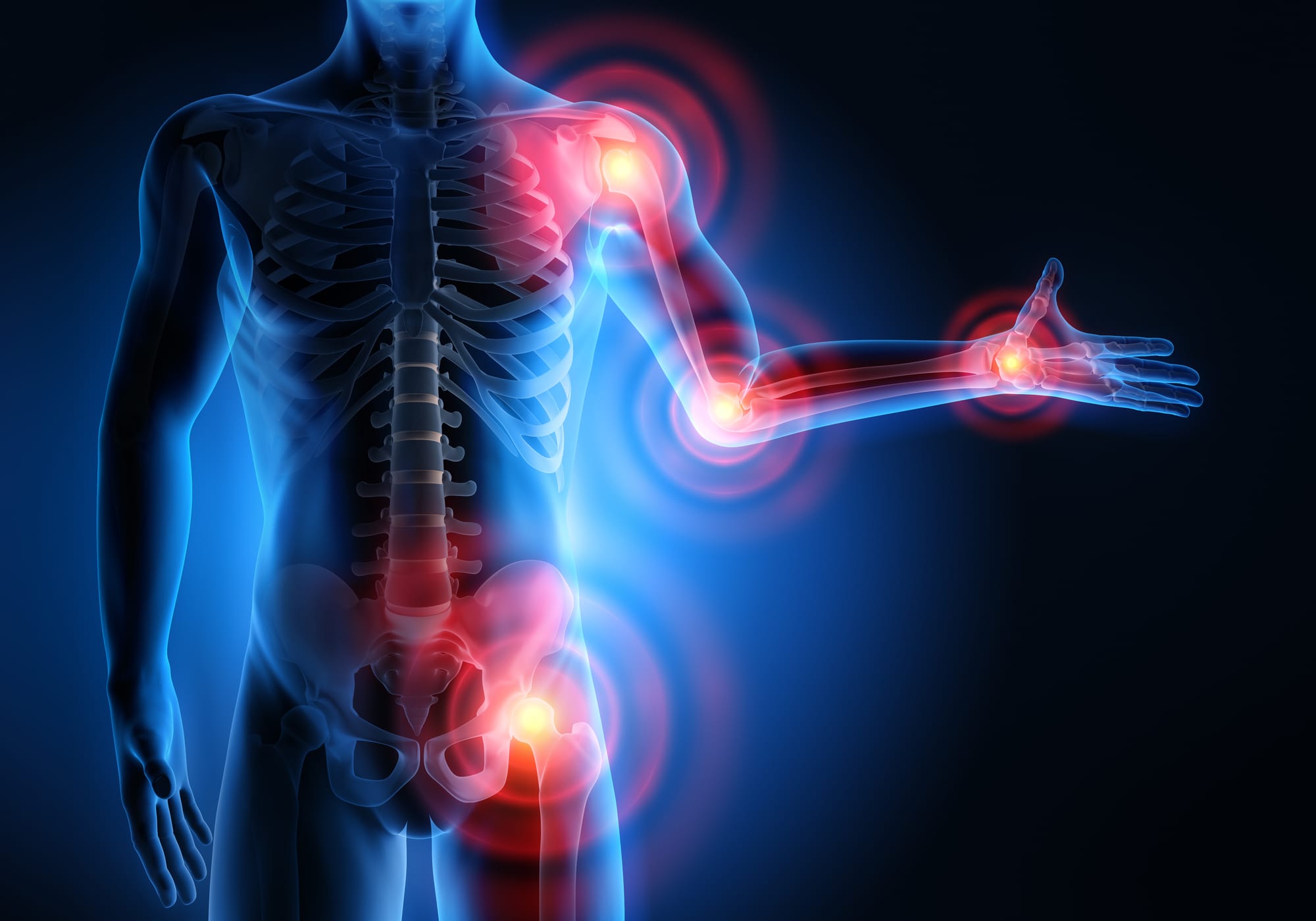Nutrition Tips to Support Mobility and Joint Health

As we age, maintaining strong, flexible joints and good mobility becomes essential for staying independent and active. Whether you’re an older adult, an exercise enthusiast, or simply someone wanting to prevent stiffness and discomfort, the foods you eat play a powerful role in supporting joint health.Nutrition influences inflammation, bone strength, cartilage repair, and even muscle function — all key components of healthy, pain-free movement. By choosing the right nutrients, you can protect your joints, improve flexibility, and keep your body moving comfortably for years to come.
Why Nutrition Matters for Mobility and Joint Health
Our joints act as shock absorbers, allowing smooth, fluid movement between bones. Over time, wear and tear, inflammation, and nutrient deficiencies can lead to stiffness, pain, or conditions such as osteoarthritis. A balanced diet rich in anti-inflammatory and joint-supporting nutrients helps to:
- Reduce joint inflammation and stiffness
- Support cartilage and connective tissue repair
- Strengthen bones and muscles
- Enhance flexibility and range of motion
- Improve recovery after activity or injury
In short, nutrition can make the difference between feeling restricted and moving freely.
Key Nutrients for Joint and Mobility Support
Let’s look at the most important nutrients that help keep joints strong and mobile — and where to find them in your daily diet.
1. Omega-3 Fatty Acids – The Inflammation Fighters
Why it helps:
Omega-3s are powerful anti-inflammatory fats that can reduce joint pain and stiffness, especially in conditions like arthritis. They help lubricate joints and may slow cartilage breakdown.Where to find it:
- Oily fish such as salmon, mackerel, sardines, or trout
- Chia seeds, flaxseeds, and walnuts
- Algae-based omega-3 supplements (great for vegetarians or vegans)
Tip: Aim for two servings of oily fish per week or consider a high-quality omega-3 supplement after consulting a healthcare professional.
2. Vitamin D – The Bone Strength Protector
Why it helps:
Vitamin D supports calcium absorption and bone strength, essential for good posture and mobility. Deficiency can lead to weak bones and muscle weakness, increasing the risk of falls and fractures.Where to find it:
- Sunlight exposure (10–20 minutes daily when possible)
- Fortified foods (such as cereals and dairy alternatives)
- Fatty fish, egg yolks, and liver
Tip: In the UK, supplementing vitamin D between October and April is recommended due to limited sunlight.
3. Calcium – The Building Block for Strong Bones
Why it helps:
Calcium keeps bones dense and joints well-supported. Low calcium intake can lead to brittle bones and reduced mobility over time.Where to find it:
- Dairy products (milk, yoghurt, cheese)
- Fortified plant-based milks (almond, soy, oat)
- Green leafy vegetables (broccoli, kale)
- Almonds and tofu
Tip: Combine calcium with vitamin D for maximum absorption.
4. Collagen and Protein – The Tissue Repairers
Why it helps:
Collagen is a key component of cartilage, tendons, and ligaments, while protein supports muscle strength around the joints. As we age, collagen production naturally declines — leading to stiffness or reduced mobility.Where to find it:
- Lean meats, poultry, fish, and eggs
- Bone broth and collagen peptide supplements
- Beans, lentils, and tofu
- Gelatin-based foods
Tip: Include a source of protein in every meal to maintain muscle and joint integrity.
5. Antioxidants – The Joint Protectors
Why it helps:
Antioxidants combat oxidative stress, which can damage joint tissue and accelerate inflammation. Vitamins C and E are particularly beneficial for joint protection.Where to find it:
- Vitamin C: citrus fruits, berries, bell peppers, and kiwi
- Vitamin E: nuts, seeds, and avocados
- Polyphenols: green tea, turmeric, and dark chocolate
Tip: Add colour to your plate — the more variety of fruits and vegetables, the better your antioxidant intake.
6. Magnesium – The Muscle Relaxer
Why it helps:
Magnesium supports muscle relaxation and nerve function. It helps reduce muscle tension and improves movement efficiency.Where to find it:
- Leafy greens (spinach, kale)
- Nuts, seeds, and whole grains
- Dark chocolate and bananas
Tip: A warm magnesium-rich Epsom salt bath can also help ease stiff muscles and joints.
7. Curcumin – The Natural Anti-Inflammatory
Why it helps:
Curcumin, the active compound in turmeric, has strong anti-inflammatory properties that can reduce joint pain and swelling.Where to find it:
- Turmeric (best absorbed when paired with black pepper and healthy fats)
Tip: Add turmeric to soups, teas, or curries for a daily anti-inflammatory boost.
Hydration and Joint Health
Water is often overlooked when it comes to mobility. The cartilage in joints is made mostly of water, and dehydration can cause stiffness and discomfort.Aim for:
- 6–8 glasses of water daily
- Herbal teas or diluted fruit-infused water for variety
Even mild dehydration can impact flexibility and cause the joints to feel “creaky.”
Foods to Limit for Better Mobility
Some foods can worsen inflammation or accelerate cartilage breakdown. Try to limit:
- Processed and fried foods – often high in trans fats
- Refined sugars – trigger inflammatory responses
- Excessive alcohol – depletes nutrients and can increase inflammation
- High-sodium foods – can contribute to fluid imbalance and joint swelling
Tip: Focus on whole, nutrient-rich foods that nourish the body from within.
Example of a Joint-Friendly Daily Meal Plan
Breakfast:
Oatmeal topped with berries, chia seeds, and walnutsLunch:
Grilled salmon with steamed broccoli, quinoa, and olive oil dressingSnack:
Greek yoghurt with a drizzle of honey and mixed seedsDinner:
Chicken stir-fry with mixed vegetables, turmeric, and brown riceHydration:
Plenty of water and green tea throughout the dayThis type of balanced, anti-inflammatory meal pattern helps keep joints lubricated, bones strong, and energy levels high.
Lifestyle Habits That Support Mobility
Alongside nutrition, daily habits can further protect your joints and keep you mobile:
- Maintain a healthy weight to reduce pressure on hips, knees, and ankles.
- Engage in regular low-impact exercise such as walking, swimming, or yoga.
- Practice good posture to avoid unnecessary strain.
- Stretch daily to keep joints flexible.
When nutrition and movement work together, the results can be life-changing — improved comfort, strength, and independence.
Finally...
Healthy joints are built from the inside out. The right nutrition can reduce inflammation, strengthen bones, and protect cartilage — helping you move freely and confidently at any age.By focusing on omega-3s, vitamins, minerals, and antioxidant-rich foods, you give your body the tools it needs to stay strong, flexible, and mobile for life. Combine this with gentle daily movement, and you’ll create a foundation for lasting joint health and wellbeing.



